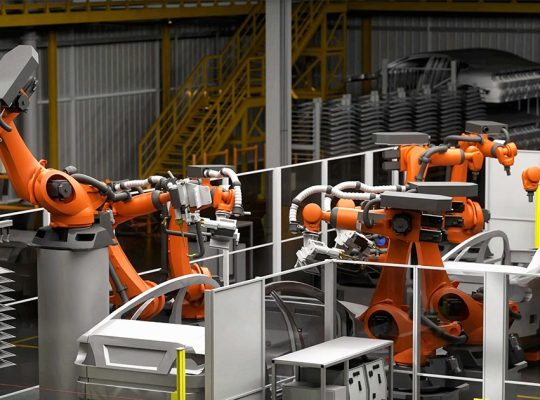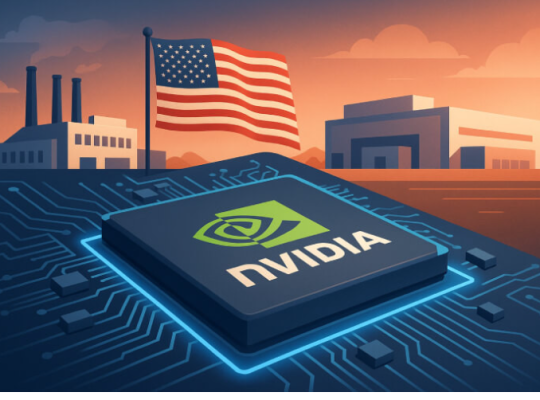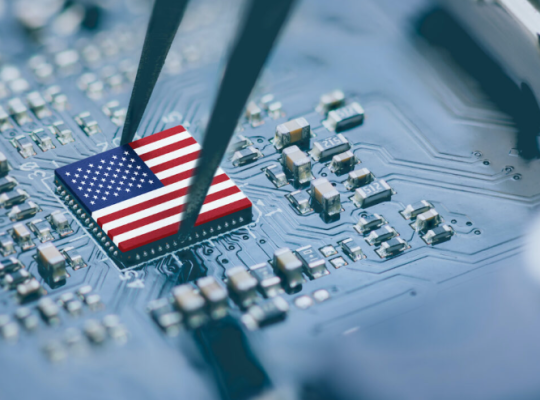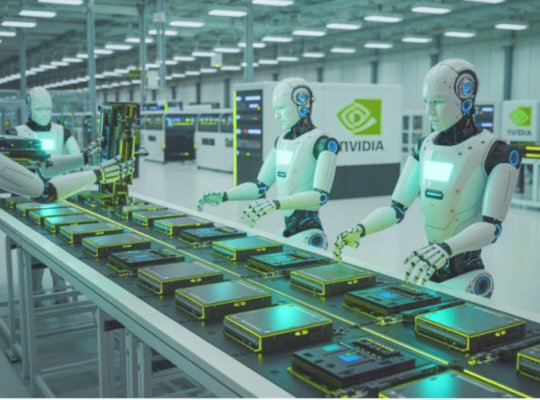Nvidia’s strategic shift towards U.S.-based manufacturing facilities for its advanced AI chips and supercomputers brings a multitude of benefits, both for the company and for the broader U.S. economy and national security. This move represents a significant investment, reportedly up to $500 billion over the next four years, in domestic AI infrastructure.
Here are the key benefits:
1. Enhanced Supply Chain Security and Resilience:
Reduced Geopolitical Risk: Historically, the U.S. has relied heavily on overseas manufacturers, particularly Taiwan-based TSMC. By bringing production to the U.S., Nvidia significantly mitigates risks associated with geopolitical tensions, trade disputes, and potential disruptions in global supply chains.
Greater Control: Domestic manufacturing provides Nvidia with more direct control over the production process, quality assurance, and intellectual property, leading to a more stable and secure supply of critical components.
Meeting Soaring Demand: The demand for AI chips is exploding. Localized production allows Nvidia to better meet this “incredible and growing demand” and reduce lead times, enabling quicker response to market needs.
2. Economic Growth and Job Creation:
Significant Job Creation: Nvidia’s investment is projected to create a substantial number of jobs. Estimates suggest around 70,000 direct jobs and roughly 300,000 indirect jobs over the coming decade across engineering, operations, and logistics.
Boost to Local Economies: New manufacturing facilities in states like Arizona (for chip production at TSMC’s plants and packaging/testing with Amkor and SPIL) and Texas (for supercomputer manufacturing with Foxconn and Wistron) will stimulate local economies through increased employment, infrastructure development, and related service industries.
Revitalization of Domestic Manufacturing: This move aligns with broader U.S. government efforts to bolster domestic semiconductor production, as seen in the CHIPS and Science Act. It contributes to a “manufacturing renaissance” in the high-tech sector.
3. Strengthening U.S. Technological Leadership and National Security:
Maintaining a Competitive Edge in AI: By manufacturing the “engines of the world’s AI infrastructure” on U.S. soil, Nvidia strengthens the nation’s position as a global leader in AI development and deployment.
National Security Implications: With tighter U.S. export controls on advanced AI chips, keeping production onshore provides greater oversight and control over cutting-edge technology crucial for defense, communications, and other sensitive sectors.
Incentives and Support: Nvidia can benefit from U.S. government subsidies, tax breaks, and infrastructure investments aimed at strengthening domestic semiconductor production, further supporting its competitive position.
4. Operational Efficiencies and Innovation:
Proximity to Key Markets: Producing chips closer to major data centers and cloud service providers in the U.S. can reduce transportation costs and allow for more efficient inventory management and timely delivery.
Leveraging Advanced Technologies: Nvidia is deploying its own technologies, such as NVIDIA Omniverse for digital twins of facilities and NVIDIA Isaac GR00T for AI-driven robotics, to optimize factory performance, improve throughput consistency, and reduce reliance on manual processes. This also serves as a showcase for their own product capabilities.
Building AI Infrastructure at Scale: The shift facilitates the creation of “AI factories” – data centers specifically designed for training and deploying machine learning models at scale, which is crucial for the future of AI.
While there are significant capital expenditures involved and competitive pressures from other chipmakers, Nvidia’s shift to U.S.-based manufacturing is a strategic move driven by long-term geopolitical pressures, supply chain resilience needs, and the burgeoning demand for AI infrastructure. It stands to create substantial economic benefits and solidify the U.S.’s role in the global AI landscape.














